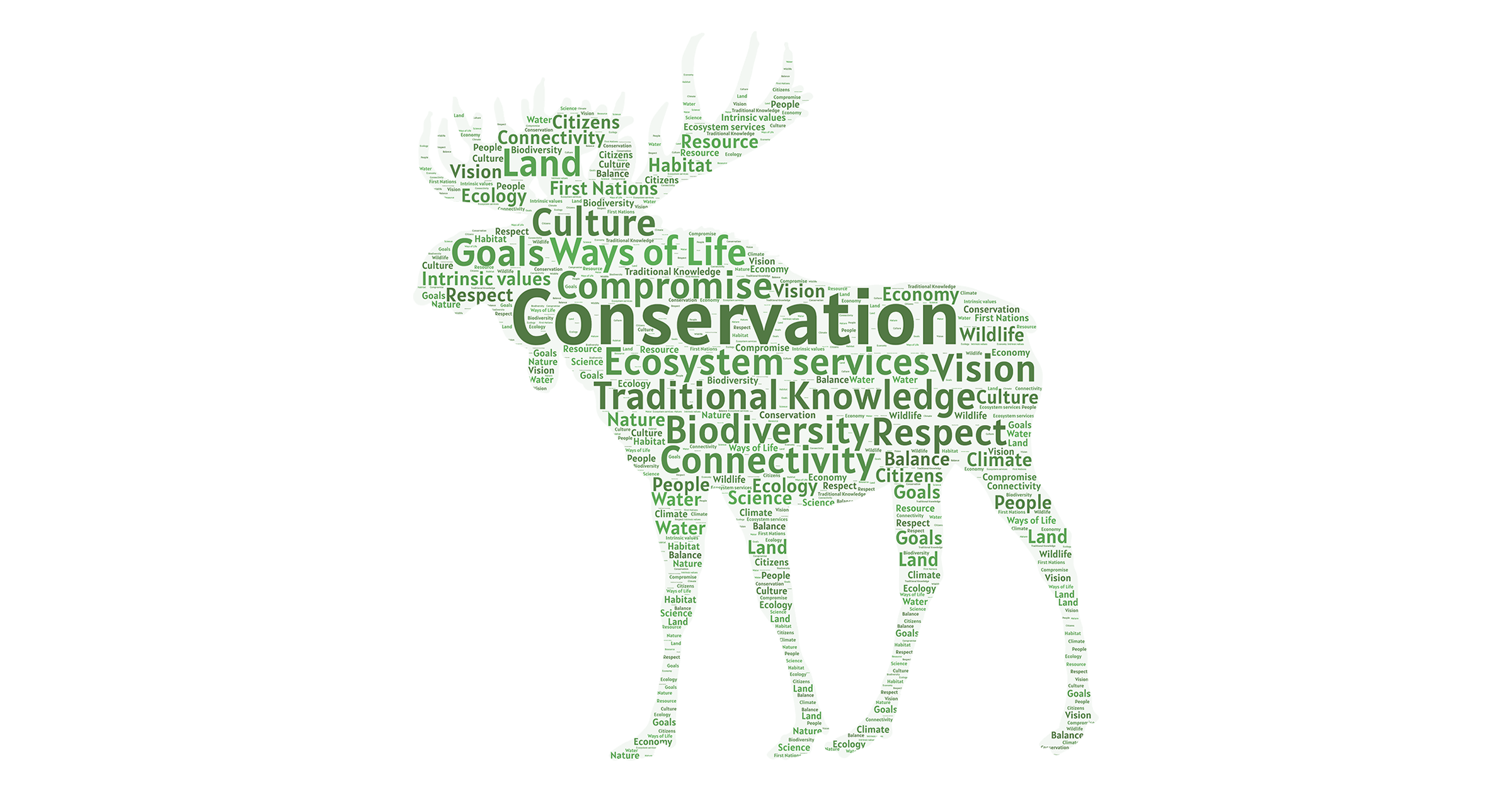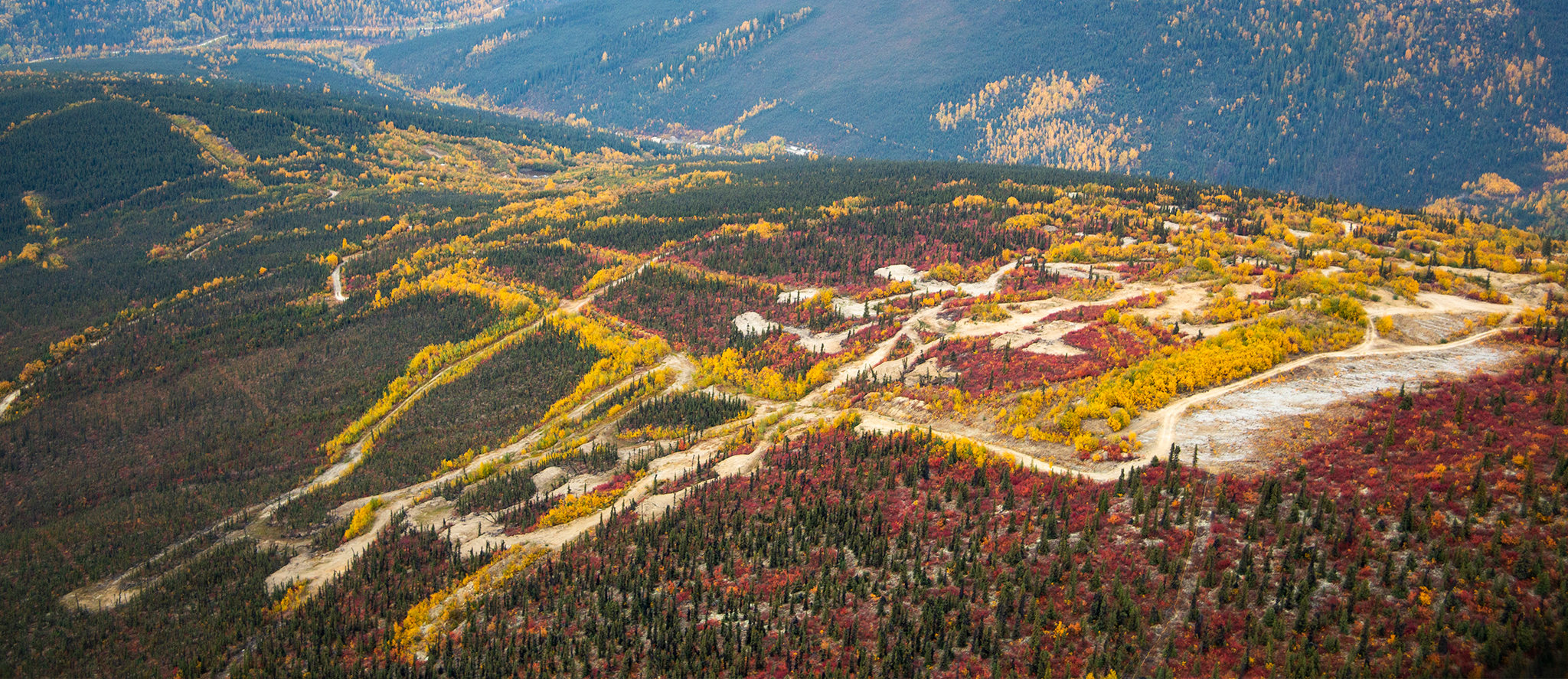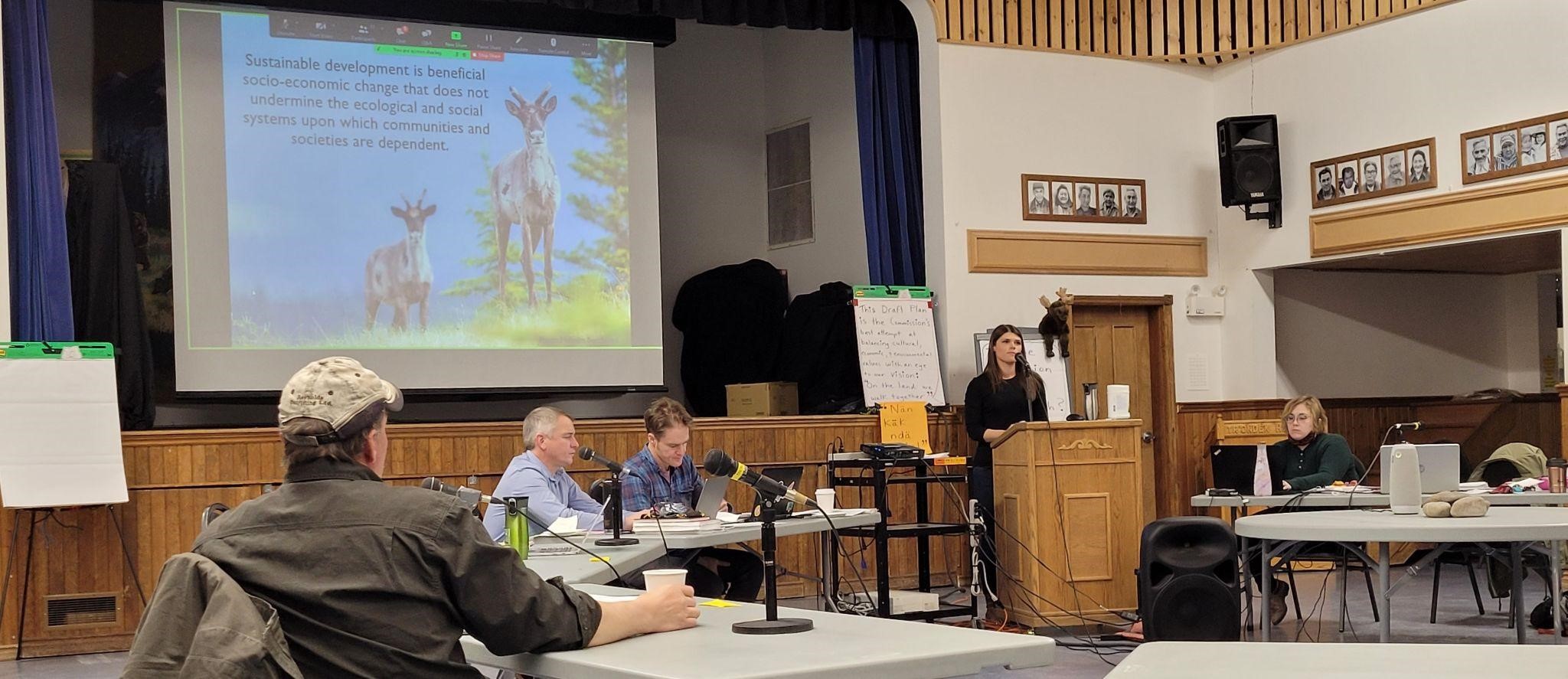
How do we give a voice to the wilderness?
Written by Chris Rider, Executive Director
Have you ever wondered how we choose the issues we speak out about, or why we frame things a certain way? Maybe at one point or another, you’ve thought we didn’t speak out strongly enough about something important?
Every day our team makes decisions about what goes into our public messaging and in this post, I want to give you a peak behind the curtain, to show you how our team goes about transforming words and ideas into meaningful change.
One of our biggest areas of work at the moment is our campaign to protect the critical ecological and cultural values in the Dawson Region so I’ll use this as a case study. Let’s break down how a campaign like this works.

Image: Roads and quarries on a hilltop near Dawson City, by Malkolm Boothroyd
The first thing we always need to do is decide what we’re working towards. In every case, when we work on a specific area or region, we look to the goals of the First Nations whose land it includes, and we use that to inform our own goals. This is key.
For decades, governments and conservation organizations identified land that they deemed worthy of conservation, and then created parks without ever working with the First Nations, Métis and Inuit whose land they were “protecting.” This is not how we work. We believe that our work to protect wild spaces must be done in a holistic way that includes wildlife, people, and ways of life – it’s critical that everything we do includes a commitment to honouring First Nations values and rights.
This means conversations with First Nations leadership including Chief and Council, as well as government staff. We also do what we can to ensure we are hearing from as many citizens as possible, especially unofficial leaders in the community such as Elders and youth.
In the case of the Dawson land use plan, Tr’ondëk Hwëch’in undertook a thorough process to determine the most important values in the region, and this gave us an excellent baseline for our own goals.
We also look at the science and draw on our own experience to make sure we are being rigorous and reasonable in everything we ask for. Partners like the Wildlife Conservation Society Canada, Ducks Unlimited Canada and the Yukon Conservation Society help with this a lot.
We make sure that what we are advocating for is right, asking ourselves some difficult questions along the way. These include:
- Are our goals grounded in western science and traditional knowledge?
- Are our goals aligned with those of the First Nations on whose lands we are working?
- Have we found the right level of ambition? Too much makes us seem unreasonable and easy to disregard, while too little ensures that we fall short of achieving what’s needed.
- What are the most important priorities that we cannot bend on? And;
- Are there some areas where we think a compromise could work?
Once we know what it is that we want to achieve, we start to think about how we can achieve it. This “how” can change over time, while the “what” generally stays consistent. The next question usually is, who do we have to convince?
At this stage of the Dawson land use planning process, there are six people sitting on the planning commission, plus supporting staff, who will be taking everything they have heard and creating the Recommended Plan.

Image: Randi Newton, our Conservation Manager presenting to the planning commission, by Chris Rider
We needed to show them that the changes we are recommending are important, based on accurate information, and supported by the broader community. We have to do this in a way that resonates for them as people, as Dawson residents and, in many cases, as Tr’ondëk Hwëch’in citizens.
Dawson City is a small community, where placer miners, environmentalists and Tr’ondëk Hwëch’in citizens all live together. In some cases, one person can be all three at once. It’s a community where these roles – and the values associated with them – have created conflict and tension, as anyone who has lived in the Yukon long enough is sure to have seen.
That’s why there has long been a fear that land use planning could tear the community apart. We heard this from everyone involved in the process, and it is something we know the commission has been incredibly concerned about. It is something we have remained conscious of throughout.

Image: Placer mining in the Indian River, by Malkolm Boothroyd
These considerations all feed into our public messaging. There are times when we have been angry or frustrated at things we disagree with, and we have felt the need to speak out. When we do, we are careful to conduct ourselves respectfully and balance what we are saying with the outcomes we hope to achieve. I am the first to acknowledge that sometimes we may err on the side of caution a little bit too much, but it’s because we know the damage that can be caused with just a few misspoken words.
When you watch one of our videos, read our materials or see us in the media, you’ll see we focus on talking about our vision. We speak about the importance of the land, the wildlife and the connections that people have. We speak about the cultural connections that Tr’ondëk Hwëch’in and other First Nations have maintained for millenia. And whenever we talk about mining, we talk about the impacts that it has on the land and the need to ensure that important values are protected. We are careful not to demonize the industry or the people working in it, because that doesn’t align with our own values, and we also know that it wouldn’t be productive.
Anger can be satisfying and effective, but only when it’s directed wisely and at the right people. It’s an emotion that’s best used sparingly, if you want people to take it seriously. Of course, we know there are times when it’s important to be angry and when those times arise, we will not hesitate to hold people to account.
All of these thoughts help drive our campaigns and I hope this post gives you a small insight into how the CPAWS Yukon team works to protect nature in the Yukon. Moreover, I hope that when you look at our materials or hear us in the media, you will see this reflected in everything you see.
And we won’t always get it right. An example of this came last year when the vice-chair of the Dawson planning commission resigned to protest the fact that Yukon Government hadn’t implemented a moratorium on staking anywhere in the region. His position was one that we supported, but we were trying to balance a number of priorities at that moment and hesitated to speak up for just a second. By the time we were ready to act, the momentum was already lost and we had missed an opportunity to draw attention to something very important. Thankfully a moratorium that covered around 40% of the region was ultimately announced, but we had learned an important lesson along the way.
I encourage our supporters to continue reaching out if you ever feel like we’ve taken a misstep. We will not always ultimately agree, but I promise you that we consider everything you send our way. And if you found this helpful or interesting, let me know – we might even make this a series of posts, breaking down different aspects of our work.
In the meantime, thank you for your support! We couldn’t do it without you.
